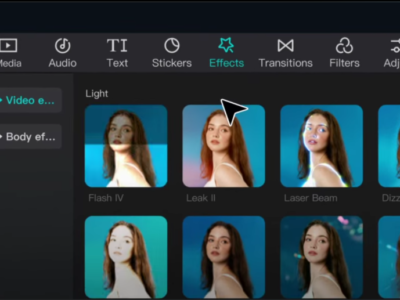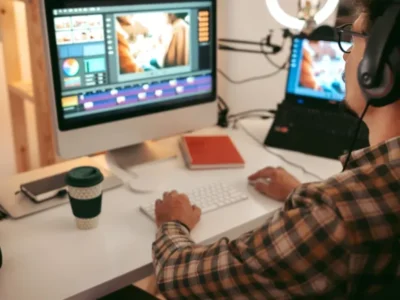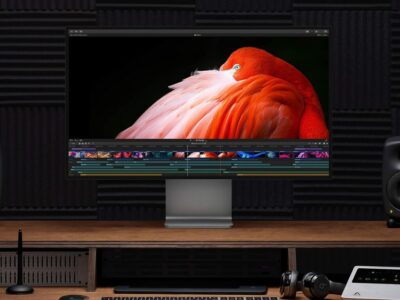In the realm of filmmaking, the tracking shot stands out as a powerful and dynamic technique, elevating the visual storytelling experience. This ultimate guide explores the nuances of tracking shots, from the equipment used to their varied applications across different genres.
So if you want to become a filmmaker or become a video editor, you are in the right place.
Understanding the Basics of Tracking Shots
A tracking shot, a staple in filmmaking, involves a moving camera independently following one or more characters. It’s essential to note that this movement necessitates the camera to be mobile, distinguishing it from mere panning or tilting. When the camera moves backward or forward, it transforms into a dolly shot, while lateral movement is referred to as ‘Trucking.’
Historically, the term “tracking shot” originated from placing the camera and dolly on tracks. However, in contemporary filmmaking, various tools like Steadicams, shoulder mounts, and drones are employed to achieve tracking shots, providing filmmakers with unprecedented flexibility.
The Art of Tracking Shots in Cinematic Masterpieces
1. Steadicams and Smooth Movements
- Martin Scorsese’s “Goodfellas” employs a famous Steadicam tracking shot, gracefully navigating through the Copacabana to emphasize the character’s success.
2. Crane Shots and Seamless Transitions
- Robert Altman’s “The Player” uses a crane in the opening scene to establish the main location—a studio lot—moving seamlessly between characters.
3. Drones: Versatility in Cinematography
- Drones, a recent addition to the filmmaker’s toolkit, offer versatility in shots. They’ve been utilized as substitutes for cranes, providing expansive and dynamic views.
4. Handheld Shots for Gritty Realism
- Handheld tracking shots in films like “Children of Men” and “Breathless” create a gritty and improvisatory feel, infusing energy and realism into scenes.
5. Crafting the Shot: Lens, Depth, and Framing
- Choices like lens type, depth of field, framing, and camera angle contribute significantly to the overall effect of a tracking shot.
Become a Filmmaker FREE eBook
In this Free 99 pages PDF file, you will find:
✔️ Camera Settings
✔️ Lighting
✔️ Directing
✔️ Post-Production
✔️ Website & online presence
✔️ and more

The Importance of Tracking Shots in Filmmaking
Tracking shots play a pivotal role in shaping the narrative and visual experience of a film. Different types of tracking shots are strategically employed based on the desired mood and impact:
1. Medium Shots for Multifaceted Storytelling
- In “Magnolia,” a medium shot is used to focus on multiple characters, creating a sense of busyness backstage.
2. Wide Shots for Spectacle and Setting
- A wide tracking shot, as seen in the Day of the Dead parade in ‘Spectre,’ emphasizes the grandeur of massive sets.
3. Dynamic Shots for Action Sequences
- In “The Revenant,” a dynamic wide tracking shot captures the chaos of a battle, allowing for multiple layers of action.
4. Shifting Perspectives for Unique Framing
- The iconic opening shot of Orson Welles’s “Touch of Evil” showcases how tracking shots can shift between different framing choices.
5. Utilizing Camera Angles for Emphasis
- Camera angles, such as an overhead angle in “Minority Report,” are employed to establish geography and emphasize oppression.
6. The Role of Blocking and Staging
- Blocking and staging are crucial in tracking shots, determining whether the camera is in front or behind the subject.
7. Varied Speeds for Emotional Impact
- Lateral tracking shots can vary in speed to evoke different emotions, heightening spectacle within the narrative.
The Importance and Variation of Tracking Shots in Filmmaking
Tracking shots, with their intricate planning and execution, can make or break a cinematic experience:
1. Adding Energy Through Quick Shots
- “Saving Private Ryan” uses quick tracking shots to infuse energy and chaos into scenes.
2. Heightening Tension Through Slower Approaches
- “The Invisible Man” utilizes slower tracking shots to heighten tension and suspense.
3. Character Movement for Seamless Transitions
- In “Boogie Nights,” character movement is strategically used to transition between conversations, keeping the audience engaged.
4. The Impact of Editing and Duration
- The editing and duration of a tracking shot contribute significantly to its impact, making it a memorable part of the film.
5. Versatility Across Genres and Moods
- Tracking shots can be applied to any genre and mood, showcasing their adaptability and varied execution.
Conclusion: Tracking Shots
In conclusion, mastering the art of tracking shots requires a deep understanding of equipment, framing choices, and the narrative impact of each movement. A well-executed tracking shot has the power to immerse the audience deeply into a scene, making it an indispensable tool for filmmakers seeking to elevate their craft.
If you are interested in learning more about cinematography, check our composition in film article.
Become a Filmmaker FREE eBook
In this Free 99 pages PDF file, you will find:
✔️ Camera Settings
✔️ Lighting
✔️ Directing
✔️ Post-Production
✔️ Website & online presence
✔️ and more

Explore related content

Video Editing Tips CapCut: Tips, Tricks, and Techniques
Video editing is an art, and there are proper tools and techniques, through them everybody… Read More »Video Editing Tips CapCut: Tips, Tricks, and Techniques

Factors to Consider Before Buying a Video Editing Computer
From helping grow your brand and business to editing just for fun with the love… Read More »Factors to Consider Before Buying a Video Editing Computer

Best Video Editing Monitors in 2024
In the evolving world of video production, the importance of a high-quality monitor cannot be… Read More »Best Video Editing Monitors in 2024